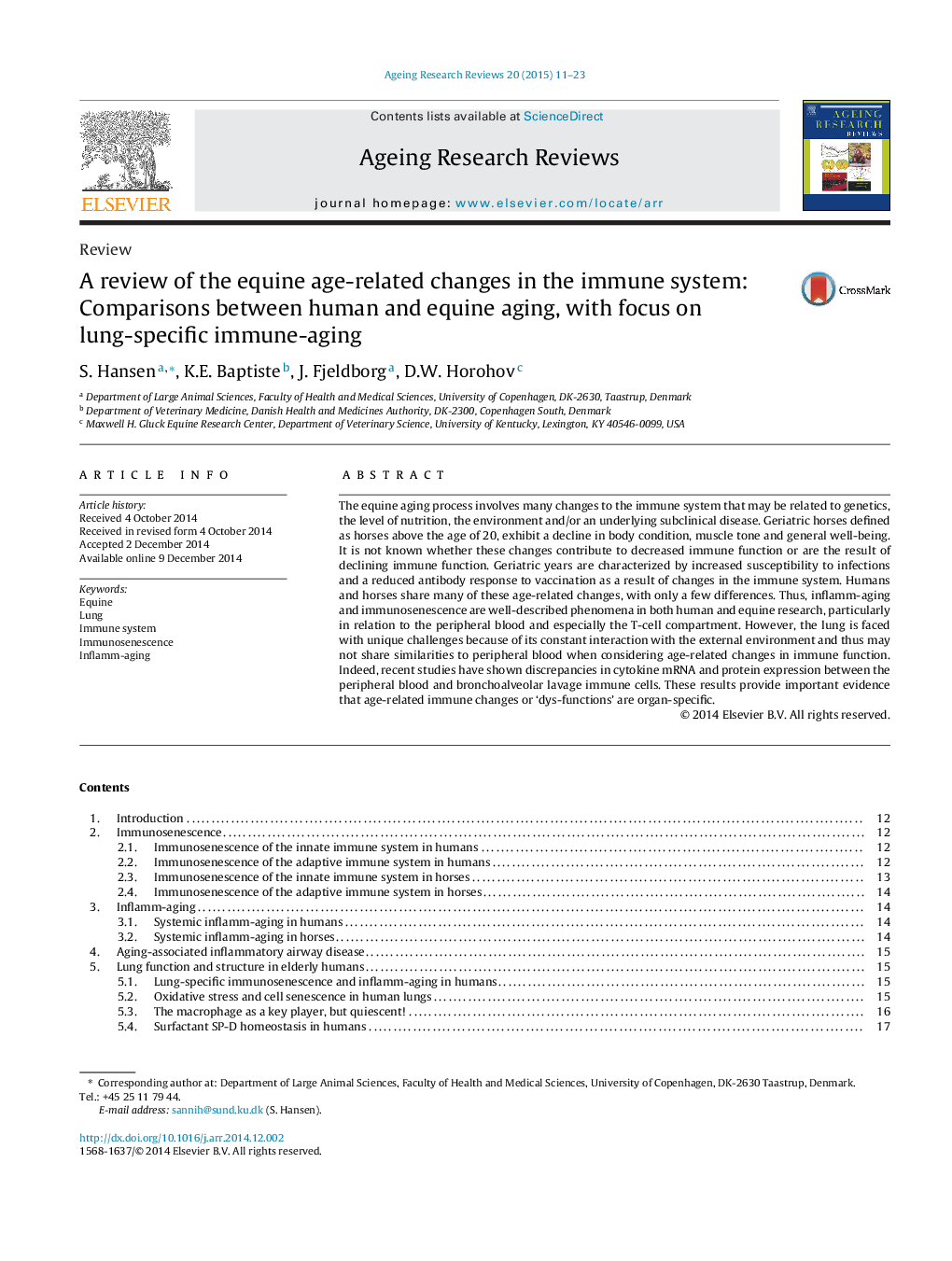| کد مقاله | کد نشریه | سال انتشار | مقاله انگلیسی | نسخه تمام متن |
|---|---|---|---|---|
| 1902222 | 1534311 | 2015 | 13 صفحه PDF | دانلود رایگان |
• COPD in humans and RAO in horses share many similarities.
• Evidence for a central role for the alveolar macrophages in aging and disease.
• Evidence of lung-specific aging.
• Evidence of a more tight regulation of cytokines within the lungs.
The equine aging process involves many changes to the immune system that may be related to genetics, the level of nutrition, the environment and/or an underlying subclinical disease. Geriatric horses defined as horses above the age of 20, exhibit a decline in body condition, muscle tone and general well-being. It is not known whether these changes contribute to decreased immune function or are the result of declining immune function. Geriatric years are characterized by increased susceptibility to infections and a reduced antibody response to vaccination as a result of changes in the immune system. Humans and horses share many of these age-related changes, with only a few differences. Thus, inflamm-aging and immunosenescence are well-described phenomena in both human and equine research, particularly in relation to the peripheral blood and especially the T-cell compartment. However, the lung is faced with unique challenges because of its constant interaction with the external environment and thus may not share similarities to peripheral blood when considering age-related changes in immune function. Indeed, recent studies have shown discrepancies in cytokine mRNA and protein expression between the peripheral blood and bronchoalveolar lavage immune cells. These results provide important evidence that age-related immune changes or ‘dys-functions’ are organ-specific.
Journal: Ageing Research Reviews - Volume 20, March 2015, Pages 11–23
